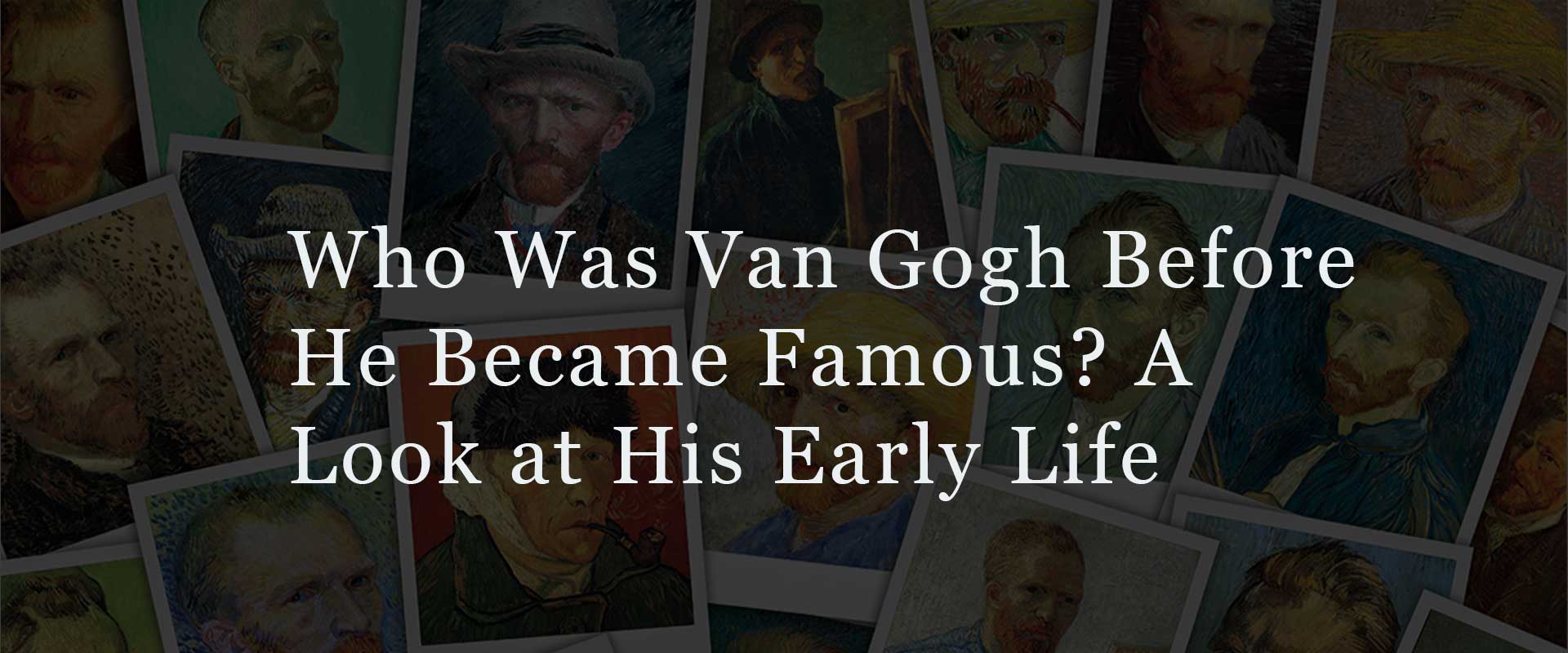Before the swirling skies of Starry Night and the bright blooms of Sunflowers, Vincent van Gogh lived a life filled with doubt, rejection, and relentless searching. Today, he’s considered one of the most influential painters in history—but that recognition came long after his death. To understand the art, we must first understand the man behind it. What shaped Van Gogh before he became famous? His early life reveals a story of quiet resilience, restless identity, and a soul in pursuit of meaning.
Childhood in the Dutch Countryside
Born on March 30, 1853, in the small village of Zundert in the Netherlands, Vincent Willem van Gogh grew up as the eldest surviving child of Theodorus van Gogh, a minister, and Anna Cornelia Carbentus, a bookseller’s daughter. The Van Gogh household was disciplined and deeply religious, instilling a sense of duty that would later clash with Vincent’s unpredictable spirit.
Though often quiet and introverted, young Vincent was perceptive and observant. He was deeply connected to the Dutch landscape—a subject he would later return to in his early artistic work. However, there was little in his early childhood that pointed to his future as an artist.
A Life of False Starts and Failures
Van Gogh’s early adulthood was marked by failed careers and growing emotional instability. At 16, he joined the art dealership Goupil & Cie in The Hague, and later worked in their London and Paris offices. Though initially enthusiastic, he grew disillusioned by the commercial side of art and was eventually let go.
Afterward, he tried teaching in England, then returned to the Netherlands to work as a bookstore clerk. Still searching for purpose, he decided to follow in his father’s footsteps and pursue ministry. But he failed the entrance exams for theology school and was eventually dismissed from a missionary post in Belgium for being too zealous and living in poverty like the miners he was supposed to serve.
These rejections were painful but pivotal. They deepened his empathy, sharpened his self-awareness, and planted the emotional seeds for his later work.
The Awakening of an Artist
At the age of 27, Van Gogh turned to art—not as a career move, but as a spiritual calling. He saw painting as a way to communicate truth and offer solace. With minimal formal training, he began studying anatomy, perspective, and copying prints to teach himself the basics. His early subjects included rural laborers, peasants, and weavers—people he admired for their grit and humility.
His palette was dark and earthy, influenced by Dutch painters like Rembrandt and the French Realist Jean-François Millet. One of his first major works, The Potato Eaters (1885), captures this raw, unpolished style. It depicts a poor family sharing a modest meal by lamplight—harsh, humble, and deeply human.
Family, Failure, and the Theo Connection
Vincent’s relationship with his family became increasingly strained, but one constant remained—his younger brother Theo. Theo not only provided financial support but also emotional encouragement through hundreds of letters exchanged over two decades. Their correspondence is now one of the most insightful records of Van Gogh’s thoughts, doubts, and ambitions.
Theo encouraged Vincent to move to Paris in 1886. There, Vincent encountered Impressionism, Pointillism, and Japanese prints. This exposure dramatically changed his style, transitioning him from somber tones to bright, emotive color. While this marks the beginning of his artistic maturity, the transformation was only possible because of the grit built during his formative years.
The Influence of Faith and Nature
Van Gogh never abandoned his spiritual leanings. Though he left the church, he continued to wrestle with faith, often equating nature with divinity. His love for the countryside, for trees and fields, became central to his worldview and work.
Even in his early drawings and watercolors, there’s a reverence for simplicity. Whether it’s a man sowing seeds or a woman bent over a spinning wheel, he saw beauty in toil and grace in the ordinary..
The Evolution Before Fame
It’s easy to forget that many of Van Gogh’s most famous works were created only in the last two years of his life. Before that, he was building—quietly, painfully, and persistently. He sketched for years before he ever touched oils. He failed again and again, each time returning with more resolve.
He painted with urgency, producing more than 900 paintings and 1,100 drawings in just over a decade. But in his early years, he was unknown. Critics dismissed his work. He struggled with mental illness. He often lived in poverty. And yet he painted.
Conclusion: A Legacy Born in Obscurity
Before he was a genius, Vincent van Gogh was a seeker. He searched for belonging, for purpose, and ultimately for a voice. His early life shaped the raw honesty that makes his art so enduring today.
From the coal mines of Belgium to the windswept Dutch fields, every failure became a brushstroke in his life’s masterpiece. Long before the fame, he had already created a legacy—built not on success, but on sincerity, struggle, and soul.
FAQs
When did Van Gogh become an artist?
He began pursuing art seriously around the age of 27, after a series of failed careers and spiritual searching.
What was Van Gogh doing before painting?
He worked as an art dealer, teacher, bookstore clerk, and missionary before turning to art as a way to find meaning and expression.
What was Van Gogh’s early style like?
His early works were dark and realistic, often focusing on working-class life and the hardships of rural existence.
Did Van Gogh receive formal art education?
Mostly self-taught, he studied briefly in Brussels and Antwerp, but developed his signature style independently through relentless practice and observation.





